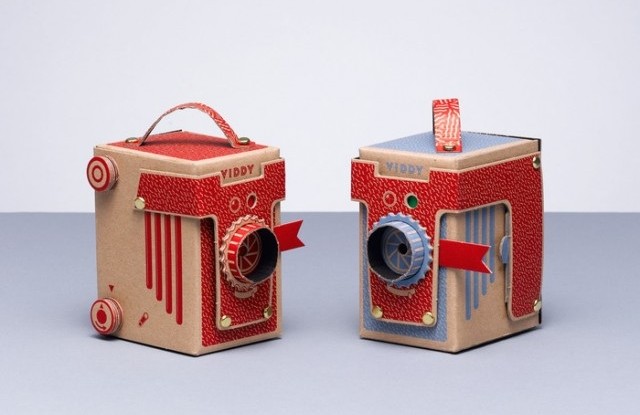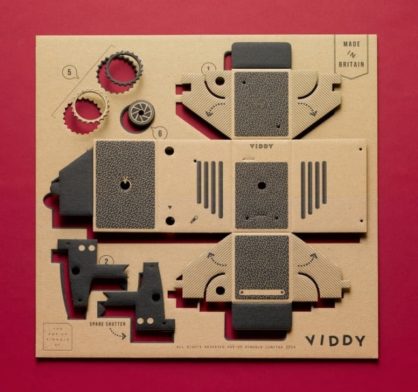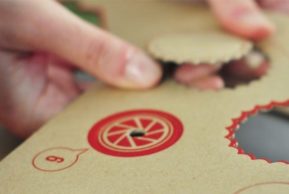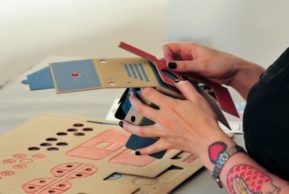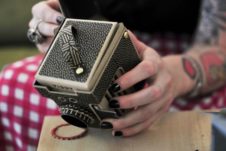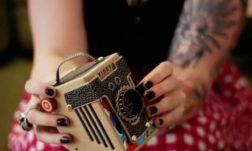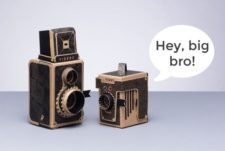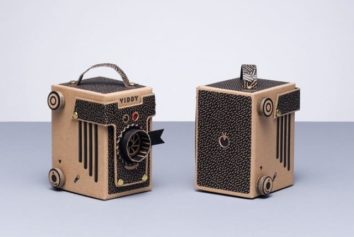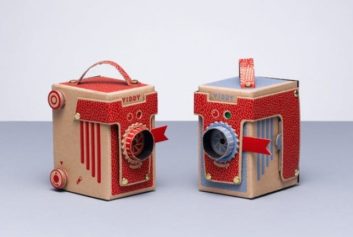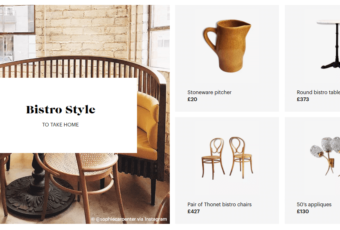After the success of the VIDERE and the pinhole-HASSELBLAD, London-based artist Kelly Angood created and launched on Kickstarter the VIDDY project, a do-it-yourself pinhole camera kit made from tough, durable recycled card, which works with 35mm & 120 mm (medium format) film. The best part about this camera, is that it can be built and set up in less than 30 minutes!
“VIDDY: no sharps, virtually no glue, and no mess”
Each and every VIDDY is screenprinted and die-cut by hand in the UK and is available in 4 colours; Green, Black, Blue or Red.
Stickers and split pins are used to build the main body and you just need a small drop of glue to construct the film advance knobs. According to the team behind the project, “there’s no sharps, virtually no glue, and no mess”.
Each VIDDY kit comes with everything you’ll need to complete the camera, including a reclaimed medium format spool, a precision laser-cut pinhole, a red light-proof window, split pins, a sticker sheet and clear illustrated instructions alongside an easy to follow how-to video.


Last but not least, the team behind VIDDY is working on an app (“the Pop-Up Pinhole app”) that will help you know how long you need to expose each picture you will take. You just need to fire it up, select your film speed and conditions, and you’ll be shown exactly how long to keep the shutter open on your VIDDY for perfectly exposed pictures.

So far VIDDY has gone beyond its pledge of £18,000 goal (£32,000 as of the date of this article), and if you which to get your own VIDDY delivered at home, be aware that you still have a little more than 3 weeks to place your order via Kickstarter. The VIDDY pinhole carboard cameras are available from £30 a pop.
What is pinhole photography?
A pinhole camera is a simple camera that uses a single small aperture – a pinhole – instead of a lens.
As light passes through this hole, an image is exposed onto the film loaded inside the camera. Exposure times are typically longer than with a normal lensed camera, due to the aperture being so much smaller. This means that pinhole cameras can typically take anywhere from a few seconds to a couple of hours to expose a photograph. Because of these long exposures the shutter is usually manually operated.
It strips complex photographic concepts down to their basic foundation: Light. How much to let in, and for how long!

